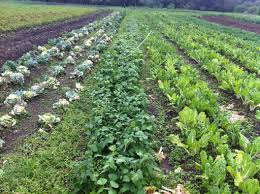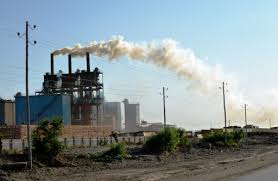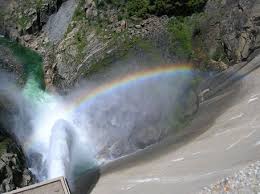Classification of Pollutants and their Impact on the Environment
Pollution is usually brought about by the addition of waste products of human activities to the environment. When the waste products are not efficiently assimilated, decomposed or otherwise removed by the natural, biological and physical processes of the biosphere, adverse effects may result as the pollutants accumulate or get converted into more toxic substances.
Thus, the materials which cause pollution of the environment are called Pollutants. It could also be defined as a harmful solid, liquid or gaseous substance present in such concentration in the environment which tends to be injurious for the whole biota
Classification of Pollutants
Pollutants can be classified in a number of ways:
Classification by the Forms they existin the Environment afterTheir Release
On this basis, pollutants can be:
Primary Pollutants: These substances are emitted directly from an identified source. These pollutants exist as such after being added or released to the environment. Examples are sulphur dioxide, nitrogen oxides, etc.
Secondary Pollutants:These are substances derived from primary pollutants by chemical reaction e.g. primary pollutants such as hydrocarbons and nitrogen oxides, particularly in the environment react in the presence of sunlight to form a group of nitrous compounds like peroxyacetyl nitrate (PAN) as the secondary pollutant.
Classification from the Ecosystem Point of View
The pollutants may be classified as Biodegradable and Non- Biodegradable Pollutants.
Biodegradable Pollutants: These include domestic sewages, heat etc. These are pollutants that can readily decompose by natural process or by engineered process (such as municipal sewage treatment plant) which enhance capacity of nature to decompose and recycle.
Non-Biodegradable Pollutants: These are pollutants such as aluminum, iron, mercury salt etc. which are usually not present in the environment. These either do not degrade or degrade only very slowly or partially and thereby pollute the environment. Such pollutants are harmful even in low concentration.
These pollutants not only accumulate, but are often biologically magnified as they move in biological cycles and along food chains. They may also react with other compounds present in the environment to produce even more toxic additional products.

Impacts of Pollution
Because humans are at the top of the food chain, they are particularly vulnerable to the effects of non-degradable pollutants. This was clearly illustrated in the 1950s and 1960s when residents living near Minamata Bay, Japan, developed nervous disorders, tremors, and paralysis in a mysterious epidemic.
More than 400 people died before authorities discovered that a local industry had released mercury into Minamata Bay. This highly toxic element accumulated in the bodies of local fish and eventually in the bodies of people who consumed the fish.
More recently research has revealed that many chemical pollutants, such as DDT and PCBs, mimic sex hormones and interfere with the human body’s reproductive and developmental functions.
Pollution also has a dramatic effect on natural resources. Ecosystems such as forests, wetlands, coral reefs, and rivers perform many important services for Earth’s environment.
They enhance water and air quality, provide habitat for plants and animals, and provide food and medicines. Any or all of these ecosystem functions may be impaired or destroyed by pollution.
Moreover, because of the complex relationships among the many types of organisms and ecosystems, environmental contamination may have far-reaching consequences that are not immediately obvious or that are difficult to predict.
For instance, scientists can only speculate on some of the potential impacts of the depletion of the ozone layer, the protective layer in the atmosphere that shields Earth from the Sun’s harmful ultraviolet rays.
Another major effect of pollution is the tremendous cost of pollution cleanup and prevention. The global effort to control emissions of carbon dioxide, a gas produced from the combustion of fossil fuels such as coal or oil, or of other organic materials like wood, is one such example.
The cost of maintaining annual national carbon dioxide emissions at 1990 levels is estimated to be 2 percent of the gross domestic product for developed countries.
In addition to its effects on the economy, health, and natural resources, pollution has social implications. Research has shown that low-income populations and minorities do not receive the same protection from environmental contamination as do higher-income communities.
Toxic waste incinerators, chemical plants, and solid waste dumps are often located in low-income communities because of a lack of organized, informed community involvement in municipal decision-making processes.
Read Also : The Four (4) Main Types of Pollution
In summary, plants and animals require water that is moderately pure, and they cannot survive if their water is loaded with toxic chemicals or harmful microorganisms. If severe, pollution can kill large numbers of fish, birds, and other animals, in some cases killing all members of a species in an affected area.
The environment has become contaminated, undesirable and therefore, harmful for the health of living organisms, including man.
Pollutants can be defined as a harmful solid, liquid or gaseous substance present in such concentration in the environment which tends to be injurious for the whole biota
Humans are at the top of the food chain, they are particularly vulnerable to the effects of non-degradable pollutants.
Pollution also has a dramatic effect on natural resources. In addition to its effects on the economy, health, and natural resources, pollution has social implications.
In summary, in general, using recycled materials to make new products costs less and requires less energy than using new materials and recycling can also reduce pollution, either by reducing the demand for high-pollution alternatives or by minimizing the amount of pollution produced during the manufacturing process.
Recycling decreases the amount of land needed for trash dumps by reducing the volume of discarded waste.
Recycling is the collection, processing, and reuse of materials that would otherwise be thrown away. The most commonly recycled materials are those that are used in large quantities.
Recycling conserves natural resources by reducing the need for new material. Recycling saves energy by reducing the need to process new material, which usually requires more energy than the recycling process.
Recycling reduces pollution because recycling a product creates less pollution than producing a new one.
Recycling saves valuable landfill space, land that must be set aside for dumping trash, construction debris, and yard waste.



